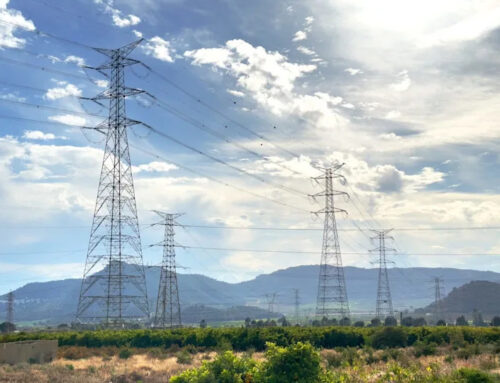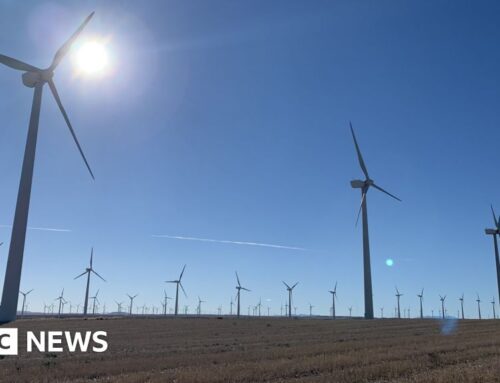Mid-Ohio Valley Climate Corner: Biting your nose to spite your face
May 31, 2025

(Mid-Ohio Valley Climate Corner – Photo Illustration – MetroCreativeConnection)
It has become obvious that the Trump administration as well as Republicans in Ohio and West Virginia no longer believe their own mantra “all of the above” when it comes to energy sources. Instead, this administration has put a halt to as many renewable energy projects as possible and is now taking us back to the good ole’ days where fossil fuels were our only choice.
West Virginia politicians and the Trump administration want to revive the coal industry while ignoring the negative environmental and health impacts, the costs, and the fact that the average age of coal plants is over 50 years. Coal states like West Virginia are getting help from Trump in the form of several executive orders. The first, Strengthening the Reliability and Security of the United States Electric Grid executive order (EO), permits the U.S. Department of Energy (DOE) to favor fossil energy over renewable energy and to use its emergency powers under Section 202 of the Federal Power Act to prop up old, uneconomic coal-burning power plants “even if there are cheaper alternatives that could replace them.”
The second EO, Reinvigorating America’s Beautiful Clean Coal Industry, will permit the expansion of coal leasing on federal lands and offer loans as well as expedite permitting. The third directive, Regulatory Relief for Certain Stationary Sources to Promote American Energy, will exempt coal plants from complying with the U.S. Environmental Protection Agency’s (EPA) updated Mercury and Air Toxics Standards. Research shows that local communities have had to pay $236 billion in overall added health costs between 2015 and 2023 attributed to coal mining and coal power plants.
The fourth EO, Protecting American Energy from State Overreach, “directs the U.S. Department of Justice to harass state and local governments by challenging climate, climate justice, and energy laws and policies.” Coal mining and coal power plants contribute to climate changing gases like carbon dioxide and methane. Coal extraction also creates coal-ash dumps; West Virginia has 48. They “contain hazardous pollutants including arsenic, boron, cobalt, chromium, lead, lithium, mercury, molybdenum, radium, selenium, and other heavy metals. These are linked to cancer, heart and thyroid disease, reproductive failure, and neurological harm.”
Ohio, citing the need for more energy to power AI, cryptocurrency, and other technologies, wants to expand fracked methane gas production across the state. John Quigley, a senior fellow at the University of Pennsylvania’s Kleinman Center for Energy Policy said of this methane gas buildout, “we will not get to net zero by 2050 if we are building new gas plants. Period.”
Renewable energy like wind has been touted as being clean, cheap and reliable, but the Trump administration “directed agencies to stop all permits for wind farms pending federal review.”
West Virginia is also pushing back on wind energy as Sen. Chris Rose introduced SB 439 which would repeal WV law §11-6A-5a. This law allows wind turbine projects to be taxed at a lower level because they are classified as “pollution control facilities.” Sen. Joey Garcia said of SB 439, “It’s kind of a slap and an affront to those businesses in West Virginia, including those energy businesses that want to bring new investments to the state of West Virginia.”
Ohio has some of the most stringent set-back laws in the USA for wind turbines; 1125 feet from the blade tip to boundary line. However, fracking well pads can be located within 150 feet of a property boundary. Ohio’s SB 52 “grants county commissioners the power to designate areas where wind and solar development can be restricted or prohibited.” But, private land can be taken for fracking using “mandatory pooling laws.”
“There are more than 100,000 acres of former mine lands and other brownfields in West Virginia that could be suitable for solar development.” West Virginia had plans to build solar arrays in these types of areas where extractive industries were once located. But, West Virginians still aren’t able to subscribe to community solar programs in the state, and HB 2568, introduced in February this year, will do away with net metering for public utilities. This is a process which allows citizens with solar panels to sell excess energy back to the grid.
Using SB 52, Ohio counties have stopped several solar projects which would have provided substantial benefits to the communities as well as cheap power for the grid. Recently, Open Road Renewables’ Grange Solar Grazing Center in Logan County withdrew its application for a Certificate of Environmental Compatibility and Public Need from the Ohio Power Siting Board (OPSB). It would have provided thousands of dollars in taxes to the local community along with starting a local sheep grazing industry.
Local opposition stoked by dark money groups and “anti-solar propaganda” were cited as some of the reasons the project (which was an agrivoltaics project) was abandoned. Some claim solar panels are toxic. To address these claims the Ohio Department of Health did a study in 2022 on the safety of solar energy which included: solar materials (Silicon and Tellurium), disposal and storage, heat, noise, electromagnetic fields, and battery storage. For all categories, no public health burden was found, unlike health studies performed for gas fracking by the Physicians for Social Responsibility which found multiple health issues with the process.
“According to Lazard’s 2023 analysis of unsubsidized Levelized Cost of Electricity in the U.S., both onshore wind and utility-scale solar photovoltaic (PV) technologies are more cost-effective than combined cycle natural gas power plants” and in 2024, solar and wind provided 17 percent of USA electricity, exceeding coal’s 15 percent. Why are Republicans ostracizing renewable energy and biting their noses to spite their faces?
***
Randi Pokladnik is the proud owner of an 8.4kW solar rooftop system.
Search
RECENT PRESS RELEASES
Related Post



